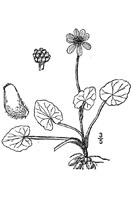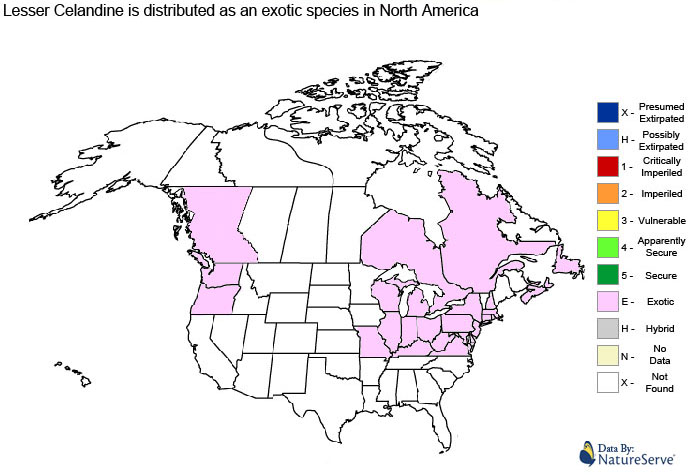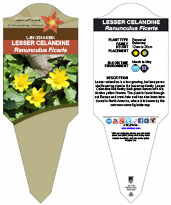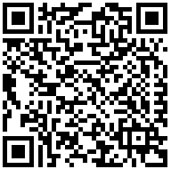

| Plant Name | Lesser Celandine | |
| Scientific Name | Ranunculus Ficaria | |
| Family | Buttercup | |
| Plant Type | Perennial | |
| Start of Blooming Season | March | |
| End of Blooming Season | May |

| Soil Conditions | |
| Soil Moisture | |
| Sunlight | |
| Notes: |

Lesser celandine is a low growing perennial plant only reaching a height of up to 25cm. The leaves of the lesser celandine plant or fleshy and cordate with a dark green colour. The flowers of lesser celandine are a distinctive bright yellow with glossy petals. Ranunculus ficaria exists in both diploid (2n=16) and tetraploid (2n=32) forms which are very similar in appearance. However, the tetraploid type prefer more shady locations and frequently develops bulbils at the base of the stalk. These two variants are sometimes referred to as distinct sub-species, Ranunculus ficaria ficaria and Ranunculus ficaria bulbilifer respectively.

| Plant Height | 12cm to 25cm |
| Habitat | Shorelines, waste places, lawns, bare disturbed ground |
| Leaves | Cordate 3cm to 6cm long |
| Leaf Margin | Sinuate |
| Leaf Venation | Palmate |
| Stems | smooth stems |
| Flowering Season | March to May |
| Flower Type | Bilaterially Symmetrical |
| Flower Colour | Yellow |
| Pollination | Bees, Insects |
| Flower Gender | Flowers are hermaphrodite and the plants are self-fertile |
| Fruit | small seeds in a swollen capsule |
| USDA Zone | 4A (-31°C to -34°C) cold weather limit |

The following health hazards should be noted when handling or choosing a location to plant lesser celandine:
 |
TOXICITY Lesser celandine contains toxic chemicals which can cause illness or death if the plant is not prepared properly. |
 |
SKIN IRRITANT |
 |
INVASION ALERT |

 |
-Click here- or on the thumbnail image to see an artist rendering, from The United States Department of Agriculture, of lesser celandine. (This image will open in a new browser tab) |

Lesser celandine can be referenced in certain current and historical texts under the following two names: Lesser celandine can be translated into the following select languages: |
|||||||||||||
| Arabic | بقلة الخطاطيف أقل | Bulgarian | малка жълтурчета | Chinese (Sim) | 较小的白屈菜 | ||||||||
| Croatian | manje rusa | Czech | Orsej jarní | Danish | mindre celandine | ||||||||
| Dutch | speenkruid | Esperanto | malplia celidonia | Estonian | Mukulaleinikki | ||||||||
| Finnish | mukulaleinikki | French | ficaire | German | Scharbockskraut | ||||||||
| Greek | μικρότερο φικαρία | Hebrew | נרקיסים פחותים | Hungarian | salátaboglárka | ||||||||
| Italian | Japanese | 少ないクサノオウ | Korean | 작은 애기똥풀 | |||||||||
| Punjabi | Lithuanian | mažiau ugniažolės | Norwegian | mindre celandine | |||||||||
| Persian | مامیران کبیر کمتر | Polish | mniej jaskółcze ziele | Portuguese | menor celandine | ||||||||
| Romanian | mai mică rostopasca | Russian | меньше чистотела | Slovak | Blyskáč jarný | ||||||||
| Spanish | celidonia menor | Swedish | svalört | Tagalog | mas kakaunti halaman ng selandine | ||||||||
| Turkish | basurotu | Ukrainian | менше чистотілу | Vietnamese | cây hoàng ít | ||||||||

| The information provided in this conservation assessment has been provided by the Natureserve Database in conjuction with various federal, provincial, state, county, district, regional, and municipal governments as well as public and private conservation authorities. Information in this section is accurate from the last time this article was updated. |
|
 |
Lesser celandine has no conversation status as it is considered an exotic species in North America. |

 |

 |
The MIROFOSS database offers free printable garden tags for personal and non-profit use. These tags can be used to properly identify plant samples in a garden. Click on the tags shown on the the screen or -click here- to download a full size jpeg image for a lesser celandine identification tag; which can be printed on paper or used with a plastic laser printer. |
 |
What's this? What can I do with it? |

| Description | Dickinson, T.; Metsger, D.; Bull, J.; & Dickinson, R. (2004) ROM Field Guide to Wildflowers of Ontario, Royal Ontario Museum, Toronto:McClelland and Stewart Ltd. |
| Description | Swearingen, J., K. Reshetiloff, B. Slattery, and S. Zwicker (2002). "Lesser Celandine". Plant Invaders of Mid-Atlantic Natural Areas. National Park Service and U.S. Fish & Wildlife Service, Washington, D.C. |
| Description | Hatfield. A. W. How to Enjoy your Weeds. |
| Folklore | F. Chittendon. RHS Dictionary of Plants plus Supplement. 1956 |
| Image Rendering | USDA-NRCS PLANTS Database / USDA NRCS. Wetland flora: Field office illustrated guide to plant species. USDA Natural Resources Conservation Service. |
| Environment | National Audubon Society. Field Guide To Wildflowers (Eastern Region): Alfred A. Knopf. ISBN 0-375-40232-2 |
| Physical Identification | National Audubon Society. Field Guide To Wildflowers (Eastern Region): Alfred A. Knopf. ISBN 0-375-40232-2 |
| January 28, 2015 | The last time this page was updated |
| ©2021 MIROFOSS™ Foundation | |
 |